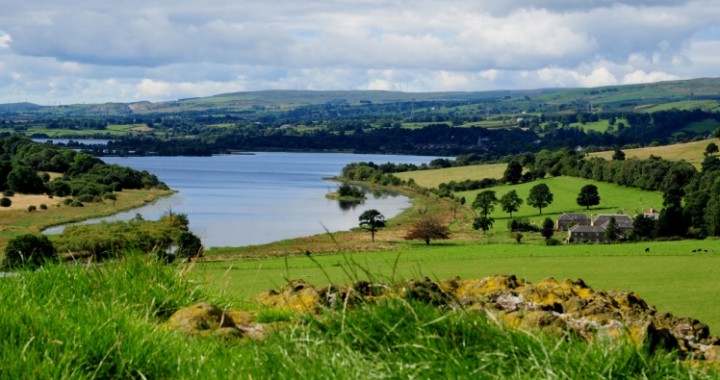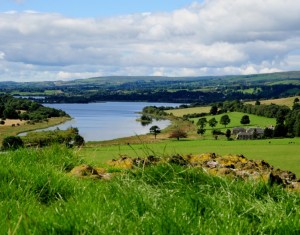Around 13,000 years ago, all of Renfrewshire west of the Black Cart was an island in the Clyde, twice the size of Arran and almost as dramatic. It is a sobering warning of the potential effects of climate change, that a warm period between glaciations had raised sea level by around thirty metres. At that time, it was possible to sail through the Lochwinnoch Gap from what is now Paisley, west to the Ayrshire coast at Irvine. Today this seems ridiculous, yet the Eglinton family tried to do the very same thing with a canal, until their ambitions dried up at Johnstone, less than half way from Glasgow to the coast
Half way along the Lochwinnoch Gap lies Castle Semple Loch, a focal point of the country park of Castle Semple Country Park. Three hundred years ago Castle Semple Loch and Barr Loch were one single stretch of water, six kilometres long. The lochs are only two or three metres deep, and the ground underneath is rich in decomposed vegetable matter. From the 1680s, a number of ambitious engineering projects were carried out to drain away the water, and create hundreds of acres of fertile farmland. The first scheme was more than 300 years ago, when the Semples began a scheme to make Castle Semple Loch ‘Meadow-Ground’.
At its east end, Castle Semple Loch drains away down the Black Cart via Johnstone, to the join the Gryfe and the White Cart, before meeting the Clyde at Inchinnan. Each successive drainage scheme had two main features. Firstly, the Black Cart was deepened at its outlet from the loch, to allow the water in the loch to drain away more easily. A dam and sluice were built at the outlet to allow the water level to be controlled. Secondly, as the loch emptied, a canal was dug down the centre to drain the water towards the Black Cart. The burns which flowed into the loch were channelled into this central canal. At the time, the Semple family were in decline, and the initial drainage scheme had limited results.
In 1726 Castle Semple was purchased by sugar planter William McDowall, on his return from the Caribbean. McDowall purchased Castle Semple estate specifically ‘in expectations of making it a profitable purchase, in the hope of draining the loch of about 500 acres, which will be of more value than the estate’.
© 2015 Stuart Nisbet, Renfrewshire Local History Forum (Click on image to enlarge)


